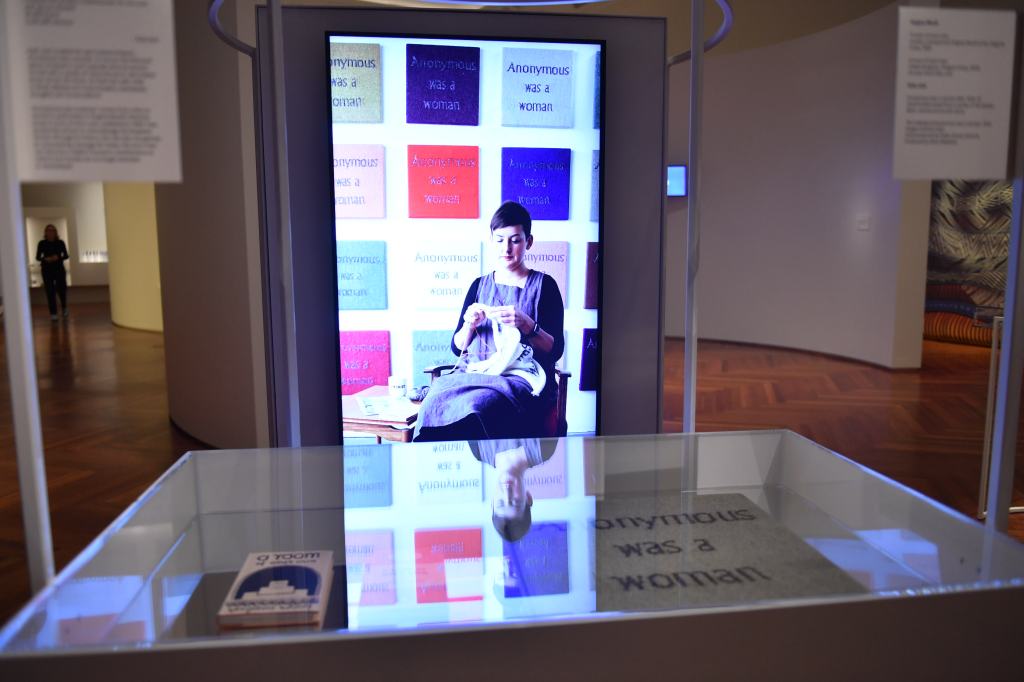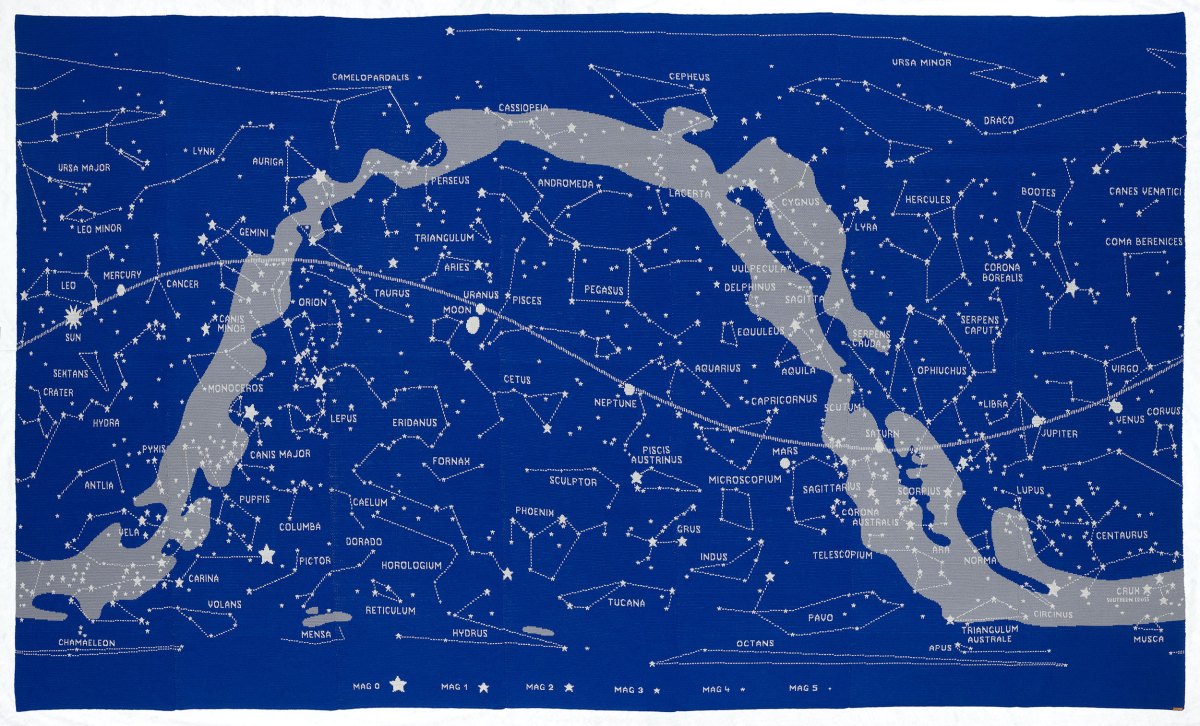At the heart of the exhibition, Handmade Universe: From craft to code and the spaces between, presently showing at the State Library of Victoria, is the notion of wonder: the objects on display reflecting this desire to understand, question and celebrate the world around us through the making of things big and small by hand or through the use of technology.
This ability to wonder is the stuff that connects humanity and enables us to evolve as a species, whether it be scientifically, artistically or spiritually. The ancient wisdom of the Indigenous inhabitants of this land expressed wonder through their dreaming and songlines; Bunjil, the wedge-tail eagle, a primary figure in Indigenous creation myth has a parallel in western cosmology.
Altair, the eagle star as it was known to the ancient Babylonian and Sumerians, is the brightest star in the northern constellation of Aquila and speaks of humankinds’ ongoing desire to understand the universe and our place in it. Stories such as these in the exhibition explored through making, observation and enquiry, remind us of these ever-present connections.
As the country’s oldest public library, established in 1854, the State Library of Victoria boasts a long history of collecting. For this exhibition, the curators have mined this collection’s treasures, along with others with the aim of breathing new life into these objects and their stories. Conceived as a conversation, 10 artists, designers and makers were invited to respond to 68 existing collection items; these include seven newly commissioned pieces. The result is a fascinating narrative between old and new voices that communicate different ways of seeing, understanding and responding to the world around us.
Mindfully designed, the exhibition is the second to be held in the Library’s new Victoria Gallery; the space part of a greater $88.1M upgrade, enabled by the endowment of the John and Myriam Wylie Foundation. It is located on the second floor of the Library and is wheelchair accessible.
Read: Library showcases how craft advances science
What is also important to note about this exhibition is that it has a focus, as the title suggests, on handmade items; things traditionally made by women or marginalised cultural communities less valued by our colonial ancestors. Things often made at home or on Country, that capture many of life’s wonders. These works range not only in size but in medium from two dimensional, printed images, to sculptural, knitted, woven, digital and mechanical creations.
Three large works visually dominate the exhibition spaces. Deanna Hitti’s A is for Alam (pen): the object, the language, the archive, 2022, consists of 156 cyanotype screen printed panels on paper, taking over much of the wall space in the first gallery. The cyanotype is one of the oldest forms of photographic printing, and it is through this medium the artist explores her Lebanese, Australian heritage and notion of identity.

The other two large pieces are in the second room and reflect different cultural understandings of the universe. Mandy Nicholson’s Dharangalk Biik/Star Country, a digital print on PVC mesh, wraps itself, like a snake, around three quarters of the available wall space and speaks of the connection between things; the skies, waters and earth.
Surrounded in the burrunj wuruwurru/night sky, the imagery expresses Indigenous understanding of the universe and creation. Waves on the top and bottom of the panel represent dreaming tracks and songlines of the Wurundjeri and the transmission of cultural knowledge, spirituality and language; the faint stars dotted throughout the design denoting Bunjil and his significance.
Sarah Spencer’s piece Stargazing, is composed of wool, cotton and LED lights. Created from hacking a domestic knitting machine she wrote, using open-source software, a computer code that enabled the machine to stitch multi-colour patterns. Spencer also developed the hardware to improve efficiency and function of this machine. The ultimate result is a 12 square-metre creation of the night sky that features the 88 constellations of Western astronomy. A digital component via a small screen in front of the work allows the viewer to track their own journey in the cosmos through a trail of the LED lights.
Smaller works like Margaret Ann Field’s delicate crochet lace sampler made in 1922 of cotton and silk along with a small book in which she published her patterns was inspired by her knowledge of astronomy and provides an interesting contrast to the larger adjacent pieces on display. The pinwheel motif in her crochet references the star Sirius, the name it is known by in Western astronomy, and is the brightest star in the Southern Hemisphere.
Working with yarn is the way Kate Just finds her voice. Responding to the Library’s 1929 Hogarth Press edition of Virginia Woolf’s A room of one’s own, Just’s piece Anonymous was a woman, 2019-2021 honours the unnoticed or often unrewarded labour done by women. Using the title phrase, drawn from Virginia Woolfe’s writing, Just knits the words 140 times using a variety of yarns such as wool, viscose and acrylic as well as incorporating a range of colours. This mammoth feat is documented on a single-channel video for the visitor to view in the exhibition space.
Inspired by the discovery in 1927 of the self-taught naturalist Edith Coleman who documented the way a particular orchid species mimics the anatomy of a female wasp to lure the male wasp to assist with pollination, Donna Kendrigan’s animation Season of the orchid, 2022, draws from Coleman’s photographs to create handcrafted models exploring the surreal in the natural world.
Read: Exhibition review: Neighbourhood Earth
Supported by text and didactic panels along with other support material to extend context and meaning for the viewer, this meticulously curated exhibition sheds light on not only some of the wonderful objects in the State Library collection but the myriad of ways we can learn and know about the world through making.
Activities associated with this exhibition are available on the State Library website.
Handmade Universe: From craft to code and the spaces between
State Library of Victoria
Free entry
Handmade Universe will be exhibited until 26 February 2023





